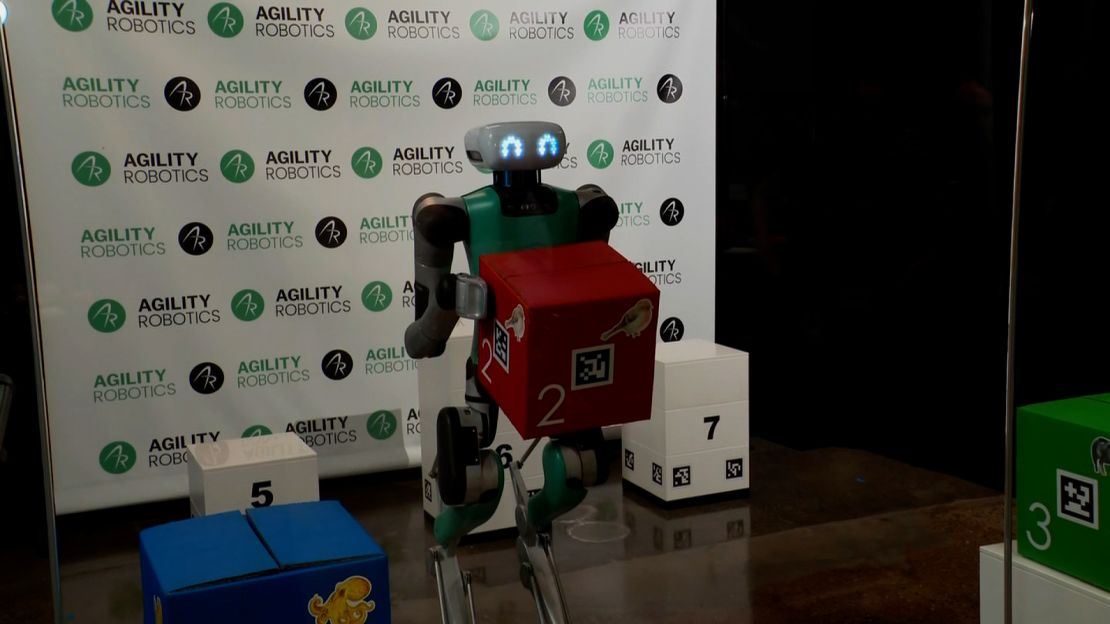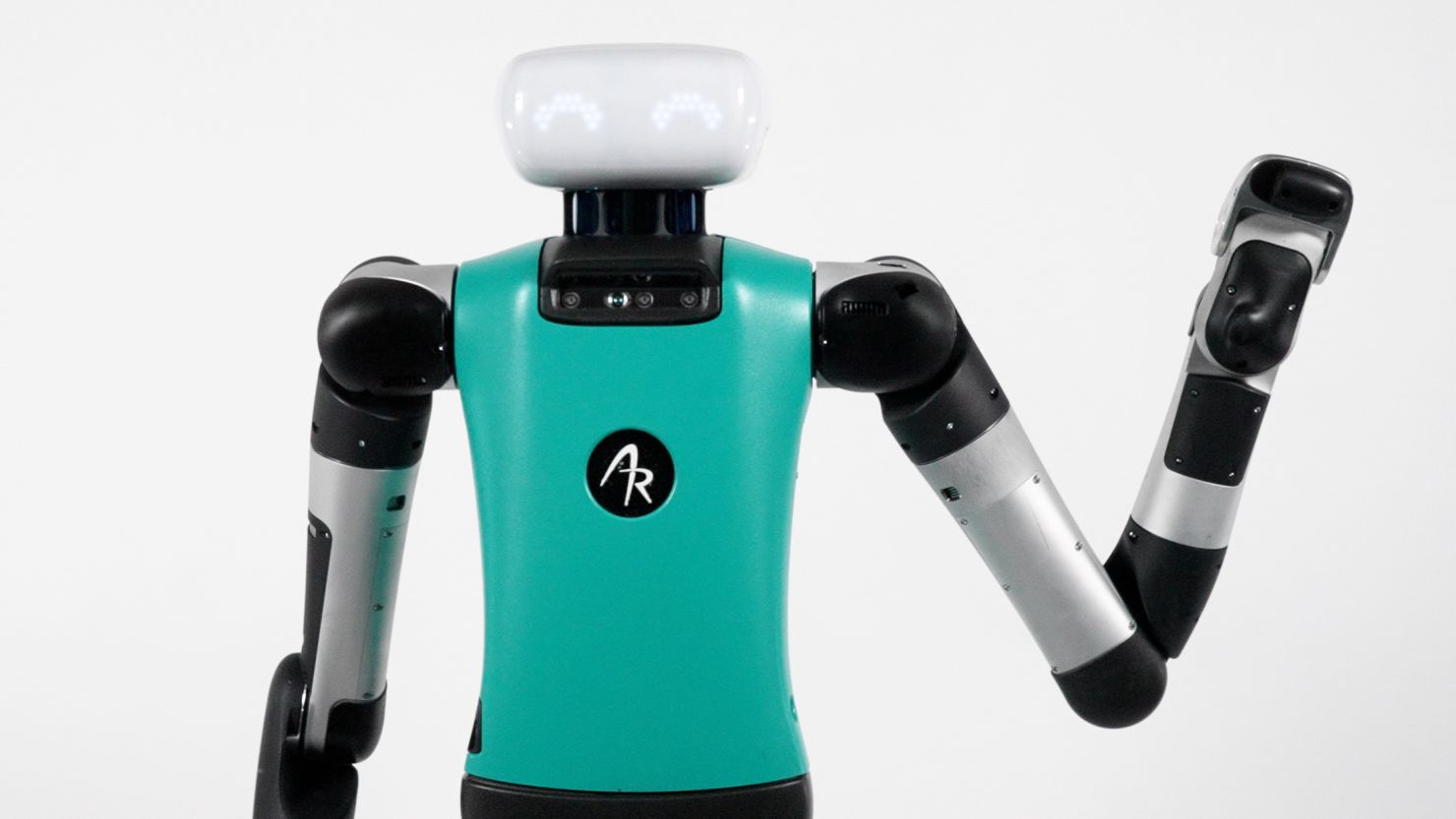In the not-so-distant future, human-like robots will be as ubiquitous as the automobile or smartphone – if Agility Robotics’ vision of the future comes to life.
“This is really an inflection point in history,” said Jonathan Hurst, co-founder of Agility Robotics, a Silicon Valley firm that showed off its humanoid, “Digit” to investors and press Tuesday.
Hurst is an engineer by trade and has been laser focused on building an anthropomorphic robot since college. “Eventually, you [will] just talk to these machines, […] and you can just ask them for help with whatever you want to do.”
The current model of Digit is limited to loading and unloading bins, stacking items and completing simple tasks. In front of a small audience Tuesday night, the robot showcased its ability to operate autonomously and problem solve in real time, thanks to OpenAI’s ChatGPT 4.0 AI integrated into its software.

But the demo also revealed how fickle the technology can be during the current testing phase. CNN Correspondent Veronica Miracle asked one Digit to complete a series of tasks via voice command. The command had to be repeated several times, and the robot completed the tasks out of order. Another robot, which was programmed to move bins from a storage rack to a rod conveyor belt, fell over and couldn’t immediately get back up.
Due to safety regulations implemented by Agility Robotics, humans must also stay six feet away from Digit. “We need thousands of hours of robots operating to show and prove the safety case for those before we feel comfortable,” said Hurst. He estimates it could be several years before the robots could move and work seamlessly alongside humans.
At first glance, “Digit” might elicit memories of a Star Wars battle droid, with a dexterous and upgraded body type. But existing alongside highly intelligent robots is no longer science fiction. Less than two weeks ago, Amazon announced it will begin testing Digit in a Seattle warehouse (Amazon is an investor in Digit’s parent company Agility Robotics.)
Digit is part of a fleet of Amazon (AMZN) robots being tested, which already has “over 750,000 robots working collaboratively with our employees.” To start, the bipedal humanoid will have a specific task to complete: “Our initial use for this technology will be to help employees with tote recycling, a highly repetitive process of picking up and moving empty totes once inventory has been completely picked out of them.”
But many workers across various sectors are seeking job security, and the notion of robot coworkers isn’t a welcome innovation for everyone.
In Hollywood, the Writers Guild of America, ended a months-long strike after studio executives agreed to limit the use of artificial intelligence, which writers feared would threaten their jobs and salaries. Actors remain on strike; the use of AI to generate actors’ likeness is one of the sticking points.
Hurst disputed the notion that Digit would replace jobs in the immediate future.
“If you were to hire a million robots all at once to do something – that’s disruptive. That’s also not going to happen. These things are physical hardware, it takes time to build them out and to scale them.” Hurst wouldn’t reveal how many Digits Amazon is currently testing. But by 2027, he expects their new robot factory in Oregon will be building 10,000 Digits per year at peak capacity.
Melonee Wise, Agility’s Chief Technology Officer, boasted about Digit’s potential in more stark terms. “I think that it’s important to recognize that Digit is not just a piece of hardware… we’re a software company. We’re building the platform by which we build an app store for labor.”










